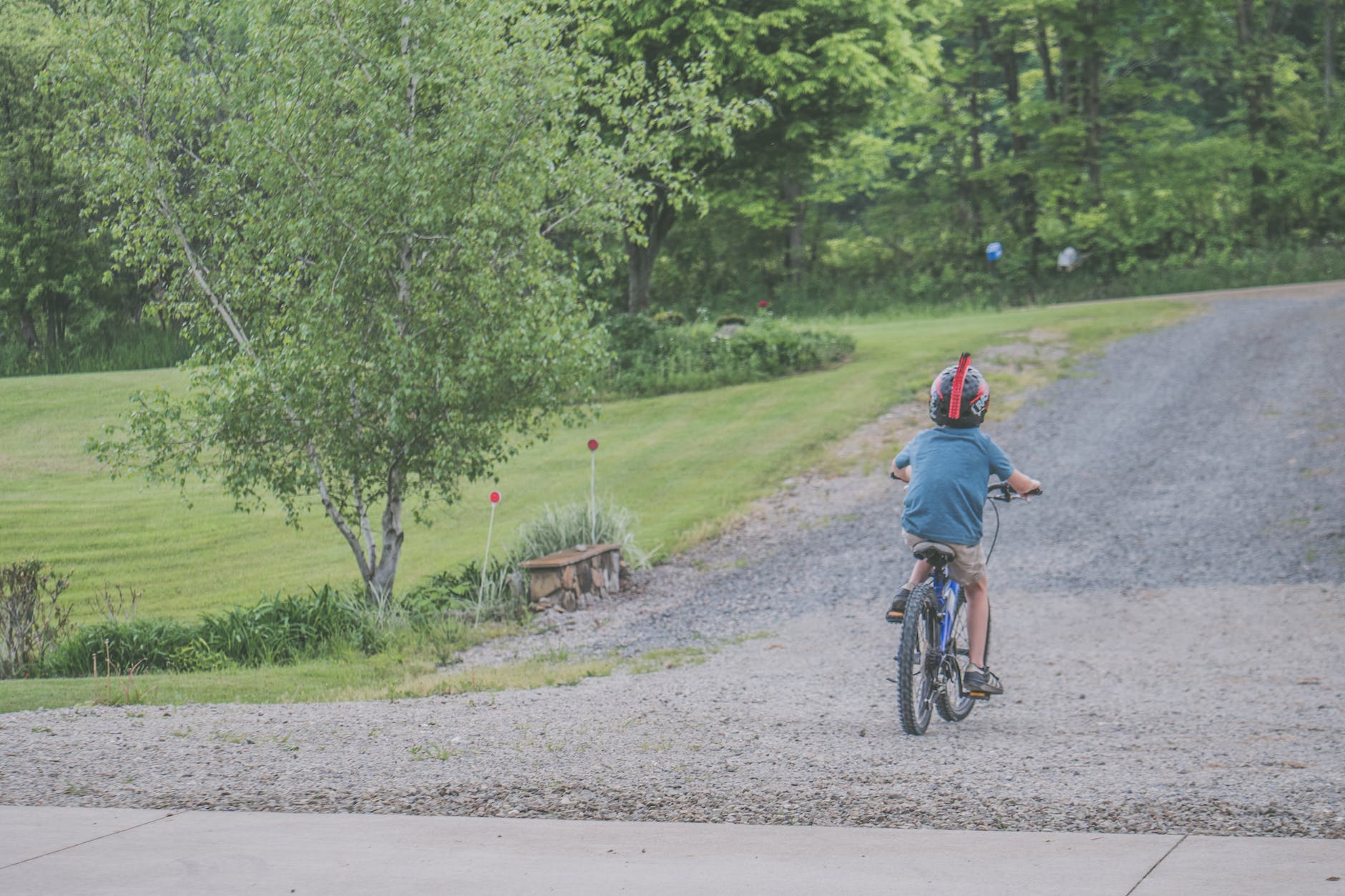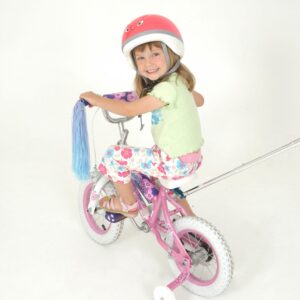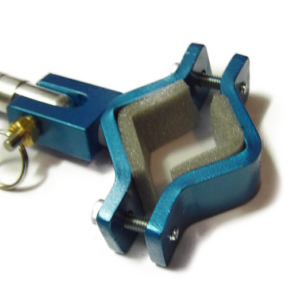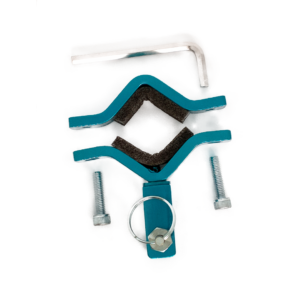If you’re looking for a bike for your child, you’ve probably already realised there are lots of different types on the market. Balance bikes, BMX bikes, cruiser bikes, and road bikes are probably just some of the different names you’ve heard thrown around.
But what exactly are these different types of bikes, and how do you know which type will be best for your child? In this article, we will be looking at some of the different types of kids bikes, so that you can find out which type will be most suitable for your child.
Children’s bike seats
Children’s bike seats aren’t technically a type of bicycle, though they are still worth a mention. This is because they are a great option for very young children (usually under four) who aren’t ready to ride by themselves.
Usually, children’s bike seats attach onto either the front or rear of mum or dad’s bike, and have a harness to keep your child safe and secure while you ride.
Children’s bicycle trailers
These are somewhat similar to children’s bike seats, in that they are not technically a type of bicycle.
However, instead of clipping on to the front or rear of your bike, children’s bicycle trailers have two-wheels, and attach onto the back of your bike frame. This means that your child can sit in the trailer, and be towed along while you ride.
There is another variation on this, which is a trailer cycle. Like conventional children’s bicycle trailers, these clip onto the back of your bike frame.
The difference is that a trailer cycle consists of an additional pair of handlebars, a seat, and a wheel attached to the back of your bike. This allows your little one to practice pedalling with you as you ride, whilst you take care of balance and steering.
Like children’s bike seats, bicycle trailers are generally used for very young children (under four).
Balance bikes
A balance bike is just like a regular pedal bike, only it has no pedals. Instead, the child keeps their feet on their ground, and simply runs along to get the bike to move.
Kids balance bikes are often used by kids aged 18 months to two years, who are starting to learn to ride a bike for the first time.
These bikes can help teach kids core skills like how to balance, stop, steer, and turn the bike first, without them having to worry about learning to pedal at the same time. This can make learning to ride a bike a much less overwhelming and frightening prospect for children who are nervous to start riding.
However, the big disadvantage to this type of kids’ bike is that it deprives children of the opportunity to learn the other core skills they need for bike riding from day one.
Although it is true that balance is a fundamental skill when it comes to riding a bike, things like pedalling and braking are equally as important. If you use a balance bike, your child will not have any opportunities to practice these skills until they get into the saddle of their first “big bike”, at which point they will have a bit of catching up to do.
Because of this, we personally do not encourage the use of balance bikes. Instead, we recommend teaching your child how to ride on a pedal bike from day one, with training wheels or stabilisers and a bike assistance handle like Push Me Home used to provide extra stability and security as needed.
You can learn more about balance bikes here.
Small wheelers and middle wheelers
When we talk about small wheelers and middle wheelers, we are essentially referring to the size of the wheels on the bike.
Generally speaking, your child will start learning to ride a smaller wheeled bike when they are younger, and graduate up to a bike with larger wheels (a middle wheeler) as they grow bigger and gain more experience riding a bike.
Small wheelers are generally classified as those with a wheel diameter of less than 16 inches (40cm), whereas middle wheelers are those with a wheel diameter of more than 16 inches (40cm).
You might also hear children’s bikes being classified as 12-inchers, 16-inchers, 20-inchers, or 24-inchers.
Essentially, 12-inchers have 30cm or 12-inch wheels for children aged between 2 and 4, who are between 80 and 100cm in height. This is the wheel size most commonly found on balance bikes and bikes with training wheels.
From there, you have three larger sizes, which are commonly found on pedal bikes for children who are ready to start riding without training wheels. These are:
- 40cm or 16-inch wheels (for kids aged between 4 and 7, with a height of 100 – 120cm)
- 50cm or 20-inch wheels (for kids aged between 7 and 9 with a height of 120 – 135cm)
- 60cm or 24-inch wheels (for kids aged between 9 and 11 with a height of 135cm – 145cm)
You can learn more about sizing for children’s bikes here.
Single speed and multi-speed bikes
When we talk about single speed and multi-speed bikes, we are talking about the different speeds that a particular children’s bike can be ridden at. You may also hear these bikes referred to as either “single geared” or “multi geared”.
Single speed or single gear bikes can only be ridden at the one speed. Generally speaking, these bikes are more affordable and more lightweight than multi-speed or multi geared bikes. However, they can be more challenging to ride on certain terrains (for example, if you are pedalling uphill).
By comparison, a multi-speed or multi geared bike offers more flexibility for adventurous riders, as your child will be able to adjust the gear of their bike to suit the type of terrain and conditions they are riding in.
Cruiser bikes
Most standard children’s bikes will be cruiser bikes. Essentially, these are basic bikes that are intended for riding around the park or neighbourhood. Generally speaking, cruiser bikes will only have a single speed, and have wider tyres than some other types of bikes.
Road bikes
A road bike is a type of children’s bike that is meant for riding on the road. Because of this, it will generally have a lightweight frame, several speeds or gears, and either flat or drop-bar handlebars. These bikes also tend to have narrower tyres, with a tread that is well-suited for riding on the road.
Mountain bikes
If you are looking for a versatile children’s bike that can be ridden on a range of different terrains and surfaces, a kids’ mountain bike could be just the thing.
With wider tyres suitable for riding on both smooth and rough surface, this type of bike truly offers “the best of both worlds”. It also typically has more advanced braking and shock-absorbent features than other types of bikes, which can be an important feature for more adventurous riders.
Many different models of mountain bikes exist, ranging from single speed to multi-speed models.
BMX bikes
BMX bikes are single speed bikes that are typically more lightweight than other types of bikes. They also usually come with 20-inch wheels.
They are typically viewed as being the “coolest” type of children’s bike, as their frames and types make it possible for adventurous kids to perform a variety of jumps and tricks.
They are known for being durable and low maintenance, so are a great fit for adventurous kids who are likely to want to experiment on a variety of different terrains.
Hybrids
Hybrid children’s bikes are those that combine a range of features from a variety of different types of kids’ bikes. By incorporating the best of cruiser bikes, road bikes, and mountain bikes into the one bike, they are suitable for riding on a range of terrains, ranging from paved paths and roads to rough dirt tracks.
Although they may not be as effective as other more specialised types of bikes (for example, a road bike will always be better for riding on the road, and a mountain bike for riding on rough terrains), hybrid bikes will usually still get the job done.
Whichever type of kids’ bike you are looking for, it is important that you choose one that is right for your child. This means taking into account things like their age, height, strength, and current level of skill and ability. You may find this article useful, which provides some more tips for choosing a bike for your child.
If this bike will be your child’s first bike, you may also want to look into some training aids to help your child out as they get in the saddle for the first time. For example, you might want to think about getting a set of training wheels or stabilisers, which can help to keep your child balanced as they master other skills, like keeping their feet on the pedals.
You may also want to consider a bike assistance handle, to help reassure your little one as they continue to grow their confidence on a bike. A removable assistance handle like Push Me Home is a great choice, as it can simply be unclipped from your child’s bike when they’re ready to start riding on their own. Find out more about Push Me Home here.





